Davincis Circle Man Painting Drawing
Vitruvian Homo
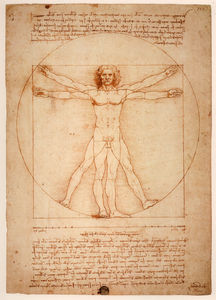
- Date of Creation:
- circa 1487
- Height (cm):
- 34.forty
- Length (cm):
- 25.50
- Medium:
- Other
- Subject:
- Figure
- Fine art Move:
-
Renaissance
- Created past:
- Current Location:
-
Venice, Italy
- Displayed at:
-
Gallerie dell'Accademia
- Owner:
-
Gallerie dell'Accademia
- Vitruvian Man Page's Content
- Story / Theme
- Inspirations for the Piece of work
- Critical Reception
- Related Drawings
- Location Through Time - Notable Sales
- Artist
- Art Period
- Bibliography
-

Marcus Vitruvius Pollio
-

Vitruvian Human being
-

Vitruvian Homo
Vitruvian Homo is a pen and ink drawing on paper that Leonardo completed in around 1487. Information technology depicts a male person figure plumbing equipment his body into two singled-out areas - a circle and a square - and he does so by altering the position of both his arms and legs.
This drawing and its accompanying notes are evidence of Leonardo'due south cognition of the proportions of the human body and are often referred to as the Canon of Proportions or, sometimes, Proportions of Man.
Inspired by the writings of Marcus Vitruvius Pollio - amend known as Vitruvius - a renowned Roman architect, Leonardo spent a nifty deal of time studying his books on architecture which were some of the only teachings of their kind to exist during the Renaissance.
In Book III of Vitruvius' treatise De Architectura, which focused on the proportions of temples, he states that such places of worship should exist based on the proportions of human, as the human body is the model of perfection and this is proven past the body's extended arms and legs fitting into the platonic geometric forms - the circle and the square.
Agreeing with the notion of the man figure equally the primary source of proportion, Leonardo named his cartoon in honour of the builder.
Eager to elaborate on his ideas, Leonardo dedicated much of his life to establishing links betwixt the composition of the human body and other models in nature.
Vitruvian Human could as well provide insight into some other trouble that Leonardo tried to solve during his career - that of 'squaring the circle', which entailed drawing a circumvolve and square that have the aforementioned area without calculation. Some claim that this sketch shows that Leonardo had a mature understanding of the problem, which others would not develop until much later.
Leonardo believed the functions of the human being body are equivalent to those of the universe and since its creation, Vitruvian Man has often been used to correspond the fundamental symmetry of the human torso, and the universe overall.
-

Pythagoras
-

Vitruvian Man
-

Vitruvian Man
The ideas expressed by Vitruvius in his writings actually engagement back to the historic period of Pythagoras, who lived at the same fourth dimension as Buddha and, like him, regarded life equally an endless wheel of rebirth and a quest for purification and a return to our divine starting place.
Believing in a connection betwixt music and numerical society, Pythagoras taught that numbers also had characters and that geometric figures were significant magical symbols. The circle, he argued, related to the sky and the cosmos and was also a representation of the soul.
Furthermore, the square was the way in which humans connected to the natural world and this explains why the number four is used to decide the seasons and elements, and and so on.
According to Pythagoras, if a human fits into both the circle and the square then this is geometric proof of their dual disposition. Such teachings institute their way into the Renaissance cheers to their incorporation into alchemy and other fields.
Adopting these views, Roman builder Vitruvius described the perfect human grade in geometrical terms, and provided inspiration for numerous Renaissance artists but it was only Leonardo da Vinci who succeeded in correctly illustrating the proportions outlined in Vitruvius' De Architectura.
Leonardo'southward Vitruvian Human being combines his understanding of such teachings with his unique observations of human being bodies. In his drawing he clearly demonstrates that the square has a lower eye than the circle, lower downwardly on the body. Such cognition helped distinguish Leonardo'southward drawing from previous depictions.
Departing from Vitruvius, however, Leonardo's extended arms mean that the fingertips are equal with the top of the caput and do not form lines passing through the navel at an obviously lower point, as they exercise in Vitruvius' work. Furthermore, Leonardo has marked the bottom of his prototype with fractions to determine the sections of the torso.
-

1 euro coin
-

Leonardo da Vinci
Vitruvian Man is not only a demonstration of Leonardo's interest in proportion and his attempts to relate man to nature but it also showcases the alloy of fine art and science that was prevalent during the Renaissance.
Today regarded every bit a cultural icon, Vitruvian Man is one of the well-nigh noted drawings in the world and has appeared on everything from the 1 euro money to text books and wear. Vitruvian Human has also come to represent alternative remedies and denotes medical professionals and establishments worldwide.
According to Keele, "Leonardo'south famous drawings of the Vitruvian proportions of a man's body first standing inscribed in a foursquare and and so with feet and arms outspread inscribed in a circle provides an excellent early example of the style in which his studies of proportion fuse artistic and scientific objectives. Information technology is Leonardo, not Vitruvius, who points out that 'If you open up the legs so as to reduce the stature past one-fourteenth and open and raise your arms so that your middle fingers bear upon the line through the top of the head, know that the centre of the extremities of the outspread limbs will exist the umbilicus, and the space between the legs will make and equilateral triangle' (Accademia, Venice). Here he provides one of his simplest illustrations of a shifting 'eye of magnitude' without a corresponding change of 'centre of normal gravity'. This remains passing through the cardinal line from the pit of the throat through the umbilicus and pubis between the legs. Leonardo repeatedly distinguishes these two different 'centres' of a body, i. e., the centers of 'magnitude' and 'gravity".
-

Gallerie dell'Accademia
Vitruvian Homo was owned by Giuseppe Bossi and he depicted it in his monograph on Leonardo's The Last Supper, entitles Del Cenacolo di Leonardo Da Vinci libri quattro (1810).
The following year he selected the section of his monograph concerned with the Vitruvian Man and published information technology as Delle opinioni di Leonardo da Vinci intorno alla simmetria de'Corpi Umani (1811), and defended information technology to his friend Antonio Canova.
Later on Bossi's death in 1815 the Vitruvian Man was caused, along with the majority of his drawings, by the Accademia.
-

Neptune
-

St John the Baptist
Da Vinci's understanding of both anatomy and geometry made him an ideal candidate to produce his cartoon, Vitruvian Man. Vitruvius' book De Architectura set up out a arrangement of ratios for the construction of 'perfect' buildings that exhibited the writer's iii necessary principles of durability, usefulness, and beauty. His organisation proved a robust one and revived interest in architecture during the Renaissance.
As Vitruvius believed that adept architecture was essentially a continuation of the laws of nature, he demonstrated that his system practical to the formation of natural structures, including human, a theory shared by Leonardo.
Despite the fact that Vitruvius' literature describing the perfect human course in geometrical terms influenced several of Leonardo' contemporaries, only he achieved a correct illustration of the proportions outlined. His resulting work went on to go one of the virtually recognized drawings in the earth and a representation of the standard of human physical beauty.
-

Adam and Eve
-

Crouching Boy
In art history, the High Renaissance was a fourth dimension cogent the pinnacle of the visual arts in the Italian Renaissance. Most concord that the Loftier Renaissance began in the 1490s, with Leonardo's fresco of The Last Supper in Milan and concluded in 1527 with the sacking of Rome by the troops of Charles V.
The High Renaissance was a time of outstanding artistic production in Italia and the all-time-known examples of Italian Renaissance painting derive from artists such equally Leonardo da Vinci, Michelangelo and a young Raphael.
The images in the Vatican by Michelangelo and Raphael are the paradigm of High Renaissance art and their size, aggressive compositions, detailed figures and iconographic references to classical antiquity, are emblematic of this period.
Although typically named as the iii giants of the Loftier Renaissance, Leonardo, Michelangelo and Raphael were not of the same historic period. Leonardo was the eldest; he was twenty-three when Michelangelo was built-in and 30-one when Raphael was born. Raphael died in 1520 at the age of 37, the year afterward Leonardo, only Michelangelo'due south career spanned a further 45 years.
To explore further about the life and works of Leonardo da Vinci please select from the following recommended sources.
• Brown, David Alan. Leonardo da Vinci: Origins of a Genius. Yale Academy Press, 1998
• Da Vinci, Leonardo. Drawings. Dover Publications Inc. , 1980
• Jones, Jonathan. The Lost Battles: Leonardo, Michelangelo and the Artistic Duel That Defined the Renaissance. Simon & Schuster Ltd. , 2010
• Kemp, Martin. Leonardo da Vinci: The Marvellous Works of Nature and Man. OUP Oxford, 2007
• Marani, Pietro C. Leonardo Da Vinci: The Complete Paintings. Harry N. Abrams, Inc. , 2003
• Syson, Luke. Leonardo Da Vinci: Painter at the Courtroom of Milan. National Gallery Company Ltd. , 2011
• Vezzosi, Alessandro. Leonardo da Vinci: Renaissance Homo. Thames & Hudson, 1997
• Zollner, Frank & Nathan, Johannes. Leonardo Da Vinci: The Consummate Paintings and Drawings. Taschen GmbH, 2007
hopkinsmanclook42.blogspot.com
Source: https://www.artble.com/artists/leonardo_da_vinci/drawings/vitruvian_man
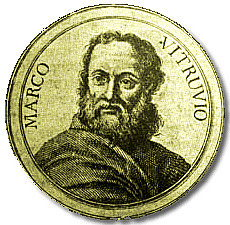

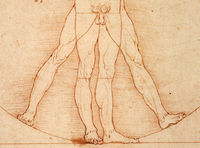
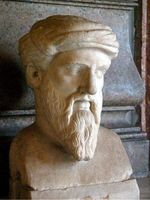
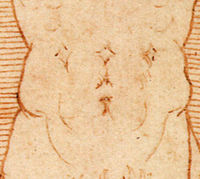

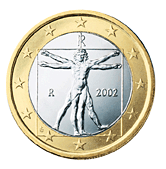
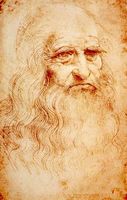
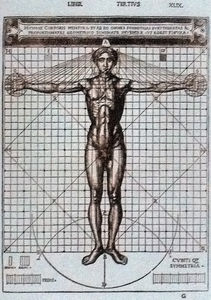
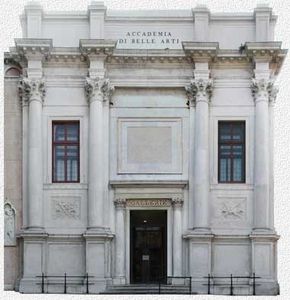
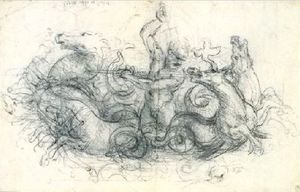
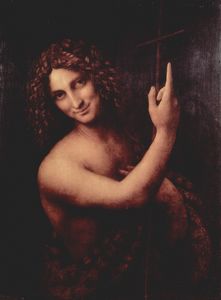
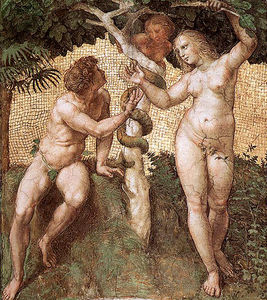
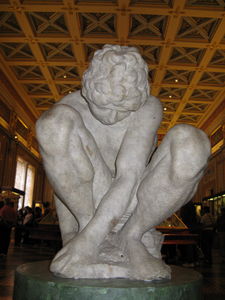
0 Response to "Davincis Circle Man Painting Drawing"
Post a Comment